
Slowly but surely, tourism around Asia-Pacific is getting more eco-friendly, and these green resorts and hospitality groundbreakers stand out.

TOURISM, OF THE MASS VARIETY ESPECIALLY, has wreaked havoc on coastal and island environments, creating a hard-to-reconcile tension between conservation and exploitation. We should think about getting back to the beach with an eye to maintaining the widespread benefits of travel: Local economies depend on visitors, and first-hand experience of these beautiful environments often inspires conservation, after all. Aside from the usual hotel cost-savings dressed up as eco-initiatives, here are a few ways tourism operators and green resorts around Asia Pacific are helping us to tread a little more lightly in our flippers.
1. Sensitive Marine Animal Interactions
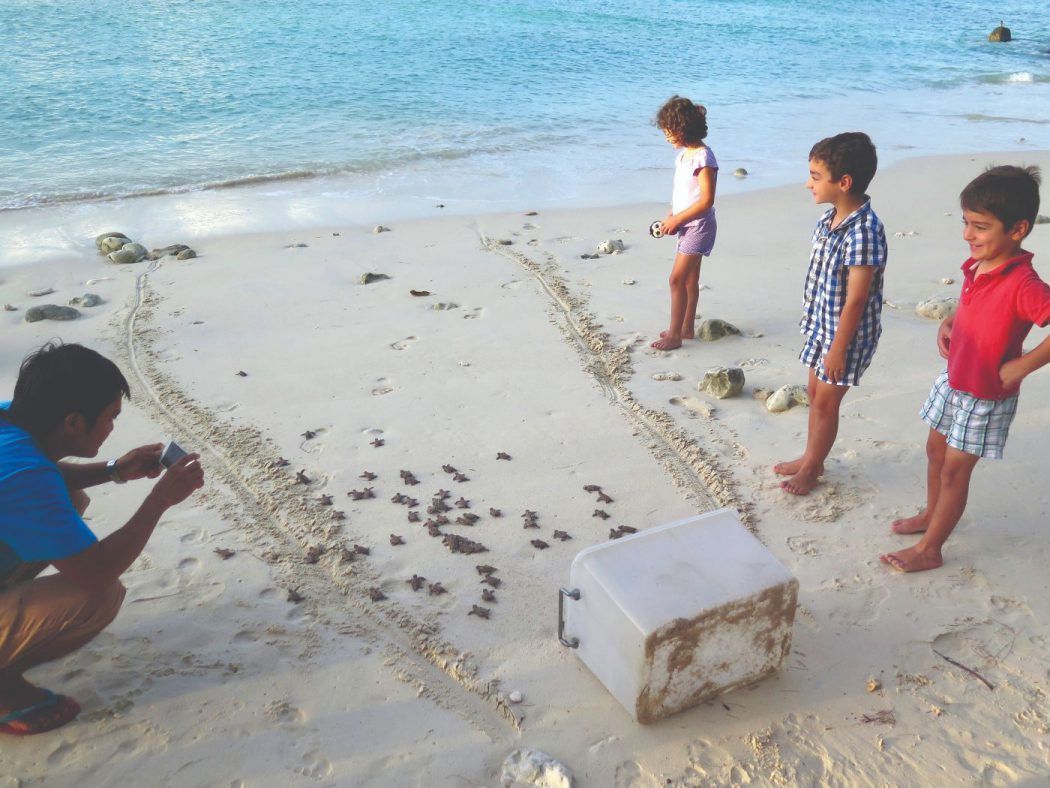
If your holiday plans include interacting with wildlife, always ask yourself if you could be inadvertently harming the very creatures you came to admire. Some offerings are badged as “conservation” but are actually run for profits, not the animals.
Take turtles. Increasing numbers of resorts are offering sea-turtle experiences, but not all are based on science. Batu Batu Resort (doubles from RM2,077 for a two-night stay) on Pulau Tengah, in southeast Malaysia, though, has an excellent program that offers a non-intrusive experience for guests. The resort funds Tengah Island Conservation and the salaries of its four biologists whose mandate includes protecting endangered green and hawksbill turtle eggs from poaching or consumption by monitor lizards. Nests are relocated to a fenced enclosure; for the safety of the turtles, they are not kept swimming in tanks for release at a convenient time and guests do not handle hatchlings.

Instead, you can opt to receive a phone call when turtles hatch (day or night), and hurry to the beach to witness the babies scamper across the sand to the ocean. Adopt a turtle nest and you’ll receive a video of your hatchlings. For those with an interest in marine or environmental science, conservation internships are available.
In the Maldives, travelers wishing to engage in conservation while snorkeling can try the Manta Scientist for a Day program at Four Seasons Resort Maldives at Landaa Giraavaru (doubles from US$2,105). In conjunction with the Maldivian Manta Ray Project in Baa Atoll UNESCO World Biosphere Reserve, you’ll shoot underwater photos of the mantas to help identify them, a key aspect in their conservation.
2. Safeguarding Marine Habitats
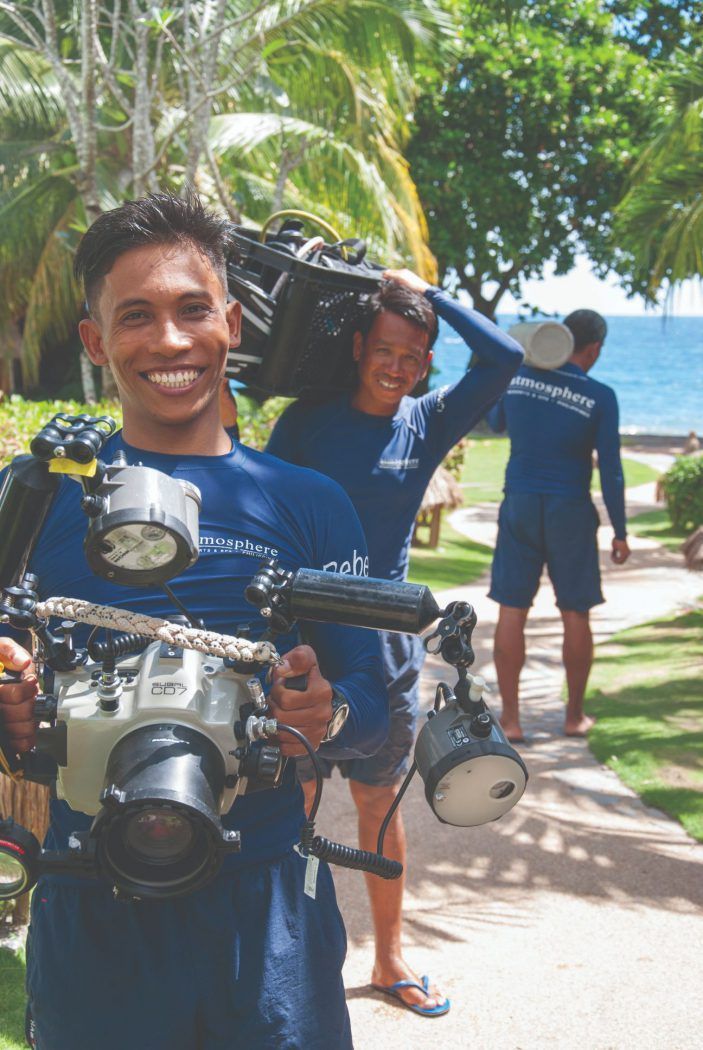
Marine habitats include coral reefs, mangroves and seagrass beds, all vital for providing homes and food for marine life. In addition to the coral bleaching caused by global warming, marine habitats can become degraded by direct tourism activities.
In the Philippines, Atmosphere Resort (doubles from P11,607) on Negros Island seeks to tread lightly in many ways. Their scuba diving operation requires everyone who straps on a tank to be educated on protecting corals. Divers watch a video introducing them to the reef safety policy of not touching anything, not wearing gloves (as this encourages touching), and never feeding animals. The dive boats (like the rooms and restaurant) ban single-use plastics and do not use anchors, which can damage reefs. The resort’s marine biologist delivers scientific lectures and reef clean-ups are conducted in collaboration with NGOs: Project AWARE and the Ocean Conservancy. The resort assists the Institute for Marine Research in collecting monitoring data of the region’s reefs.
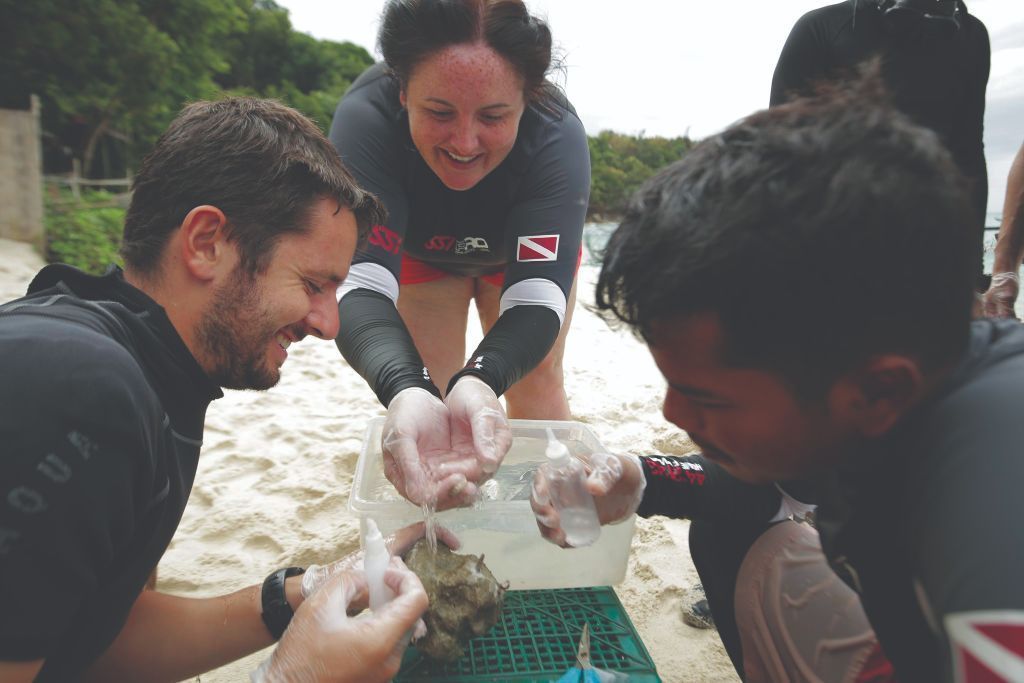
Many resorts now manage coral rehabilitation projects to assist reefs in recovering from bleaching and historical damage. The most responsible programming we’ve seen in the region is by Ocean Quest Global, which has developed a method of natural propagation without invasive materials. The organization trains local communities and dive centers throughout Southeast Asia in their process, and is helping them make their livelihoods sustainably from reefs. One place where tourists can get involved is at Adang Sea Divers (propagation courses Bt4,000 to Bt15,000). On Thailand’s Koh Lipe anyone with an interest, from landlubbers up to advanced divers, is welcome to join their selection of different Ocean Quest conservation and coral-propagation courses in the surrounding national marine park.
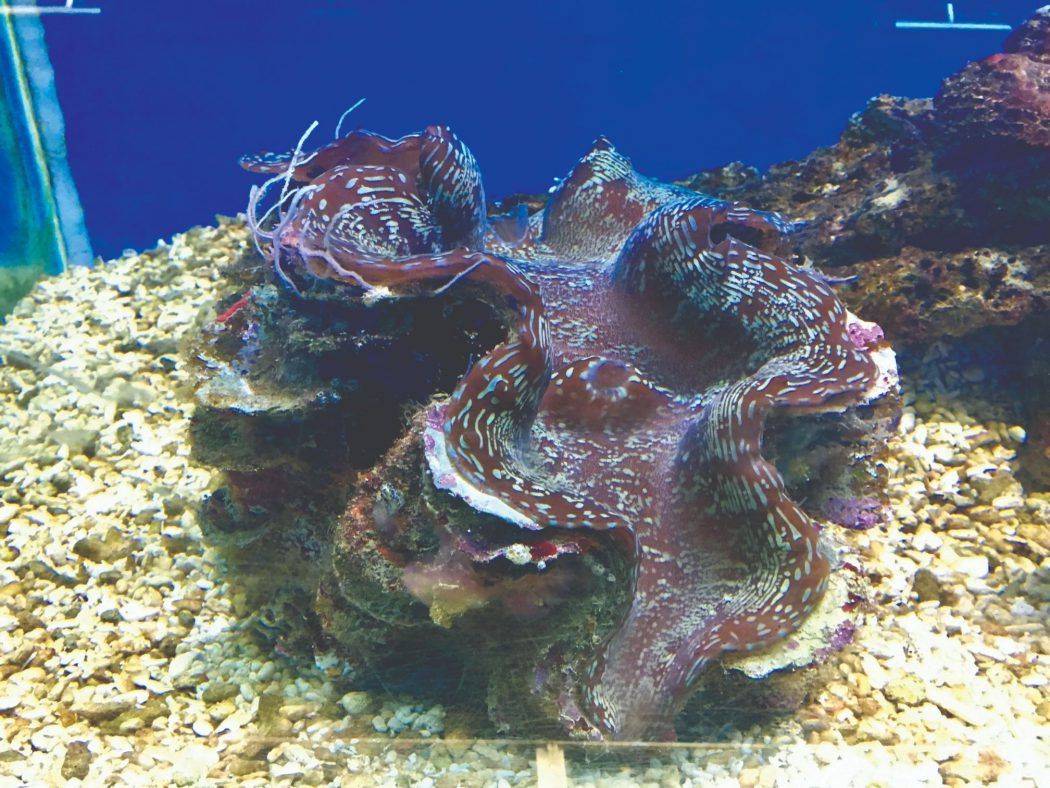
Also threatened are the colorful giant clams found on many tropical reefs. Giant clams clean seawater as they feed, and their presence is used as an indicator of reef health. However, they are becoming endangered due to poaching—for sales in the aquarium trade or as a delicacy in some Asian cuisines. Gayana Marine Resort (doubles from RM1,272) on Gaya Island, in Sabah, Malaysian Borneo, employs scientists to breed and restock reefs with giant clams, and guests can work with them as a “marine biologist for a day” to gain first-hand insights.
3. Coastal Protection
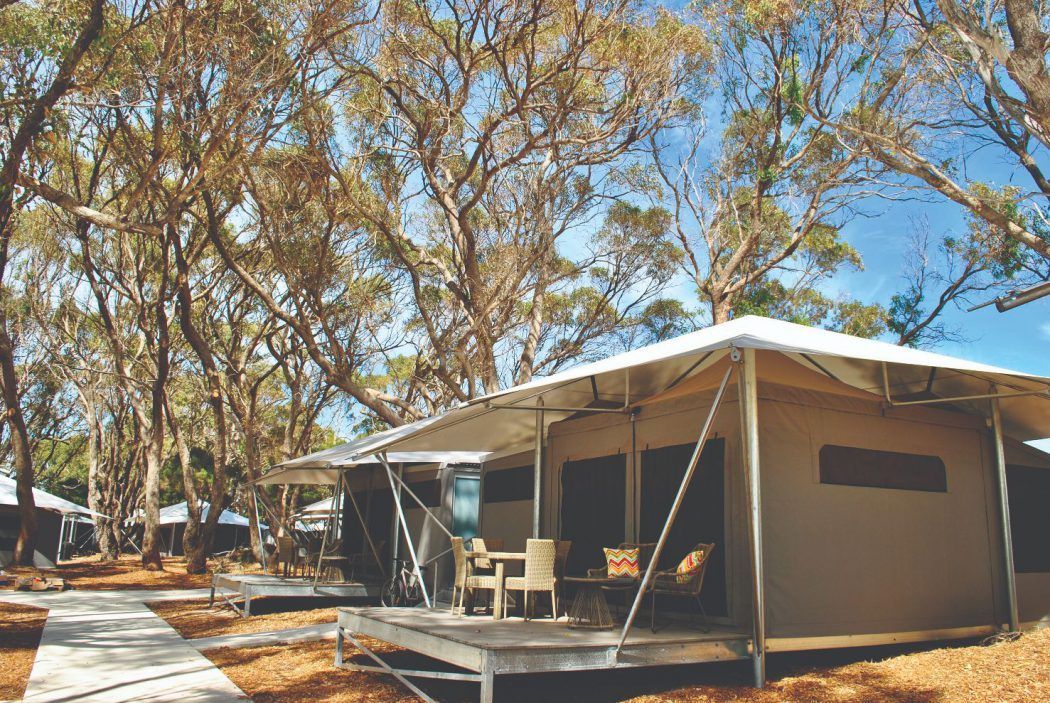
As trees, hotel buildings and even swimming pools have crumbled into the ocean, the tourism industry has been learning the hard way how much infrastructure built close to beaches can upset the process of sand deposition— an especially pressing problem now with sea levels rising. The beachfront Discovery Rottnest Island (doubles from A$330) in Western Australia, has carefully constructed all infrastructure behind the vital sand dunes, preserving the stabilizing vegetation. The resort’s eco-tents are built on raised stilts so cute, furry quokkas can pass underneath. Foot traffic on the property is restricted to boardwalks, helping prevent erosion, while the planting of 13,000 native plants further firms up dunes.
Seagrass meadows are the ocean’s unsung heroes. They stabilize beaches and the sea floor, absorb carbon dioxide that helps reduce climate-change effects, and provide food and homes for sea turtles and juvenile fish. And yet, in the quest for a white-sand postcard look, many resorts, particularly in the Maldives, have been actively removing seagrasses—an extremely harmful airbrushing of the environment.
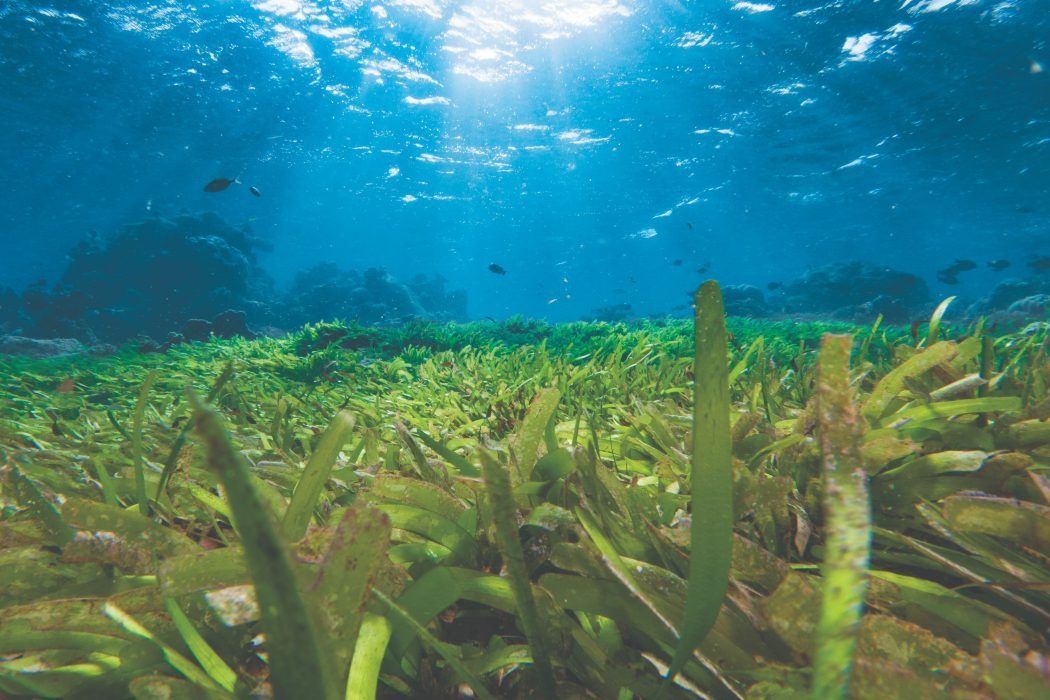
Six Senses Laamu (doubles from US$1,241) is leading the way on seagrass protection and together with the Blue Marine Foundation and the Maldives Underwater Initiative has to date convinced 30 resorts in that island nation to safeguard their seagrasses.
4. Local Food Sourcing
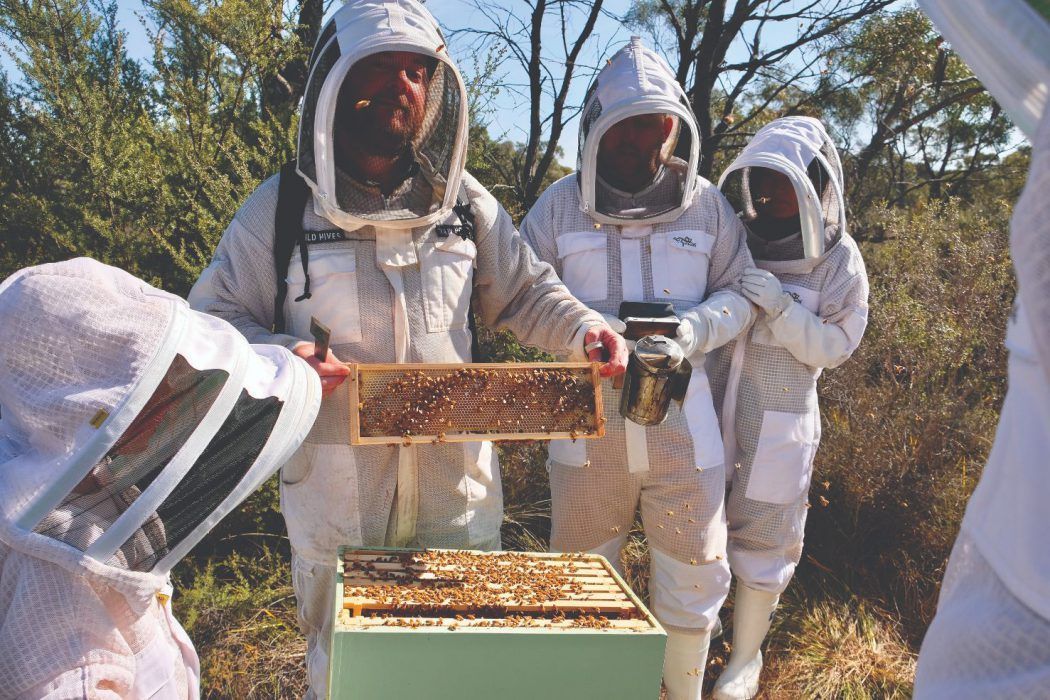
Resorts can support their neighboring communities and reduce carbon emissions via food miles if they try to stick to their own backyards.
In Tasmania, luxury lodge Saffire Freycinet (doubles from A$2,100) is in a region synonymous with fine food and wine. Not only does the hotel offer locavore fare, but also local food experiences. The beekeeping experience sees guests don protective suits to visit the on-site apiary, learning about the importance of bees to agriculture and the benefits of organic raw honey. On Saffire’s marine-farm experience, visitors pull on plastic pants instead, sloshing through a shallow estuary to discover sustainable oyster farming. The guide can open oysters for you—or, better yet, teach you to shuck your own.
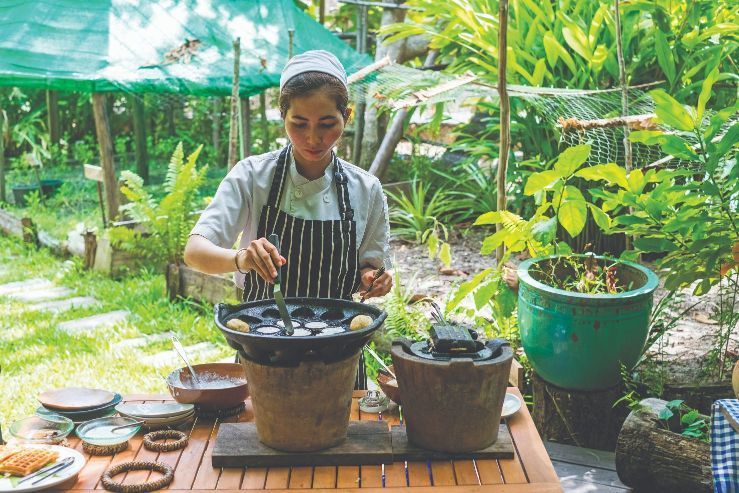
Off southern Cambodia, Song Saa Private Island (doubles from US$890) has sustainability at its core. Its construction features salvaged timber and driftwood, and its not-for-profit foundation supports marine conservation and community development. Their food continues this theme, with Song Saa serving Khmer cuisine featuring Kampot pepper and fruits and vegetables from their own island. The rice is farmed in a wildlife-friendly method, and seafood, coconuts and cashews come from local villages.
5. Back-Of-House Services

Hidden technical solutions may not be sexy, but they are the key to whether a self-styled green resort puts its money where its mouth is.
Inadequate sewage treatment or waste disposal can do extensive lasting harm, including killing reefs. The luxurious Bawah Reserve (doubles from US$1,780) in Indonesia’s Anambas Islands is a poster child of sustainability. The permaculture garden includes vine-covered trellis tunnels dripping with pumpkins, fertilized by fermented food waste. Multi-stage sewage plants terminate in ponds stocked with catfish, and pre-cleaned wastewater is recycled for toilet-flushing and garden-watering.

Small-scale resorts have often been quiet leaders in this department. In addition to the in-house wastewater filtration system and woodshop for making all their furniture and accessories, the naturally constructed Mango Bay Resort (doubles from VND6,225,238), on Phu Quoc Island, Vietnam, for years has used solar hot-water systems, and was proudly fan-only—though is introducing low-energy air-conditioning units to its rooms in a transition made feasible by sustainable construction with naturally cool rammed earth.
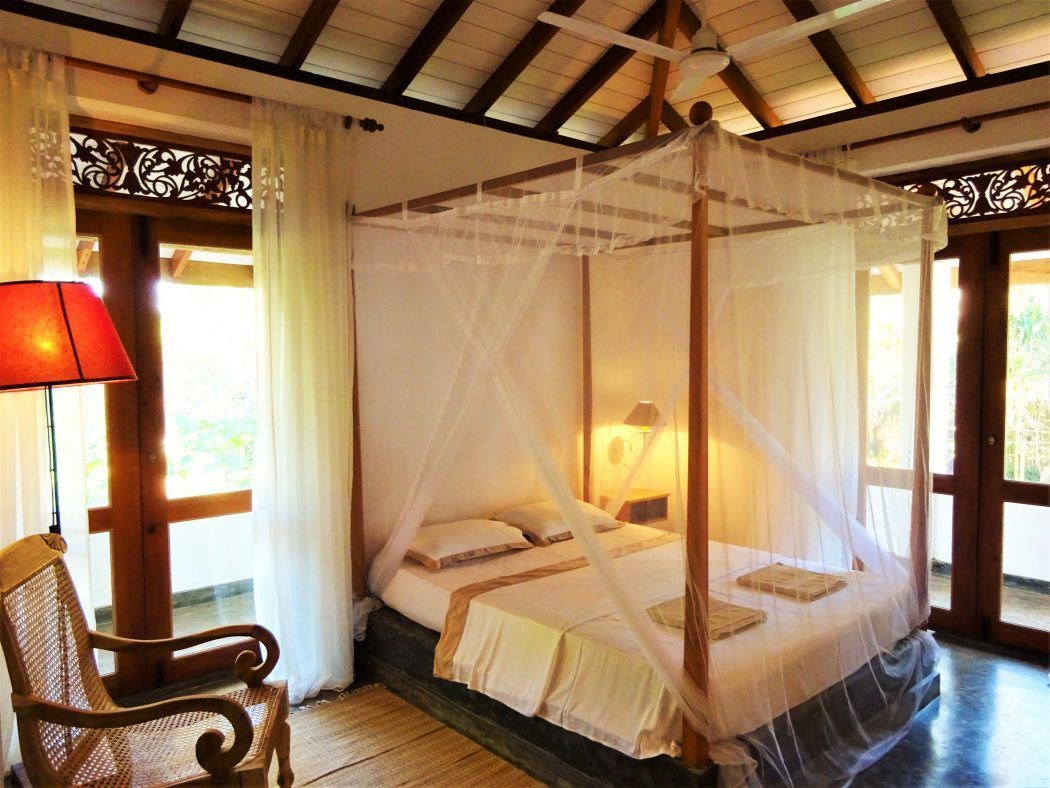
Similarly, Amuura Beach House (doubles from Rs9,900) in Beruwala, Sri Lanka, employs cooling sea breezes and high ceilings with fans rather than air-conditioning. They eschew paint in favor of polishing their Sri Lankan–timber walls, doors and floors with natural beeswax. All the cutlery and tableware are upcycled antiques. And the toilets are all compostable.
6. Community Empowerment

Often, the key to conservation success is engaging your neighbors, to ensure that the efforts are led by, and directly benefit, the community.
In Raja Ampat, Indonesia, Papua Diving owns Kri-Eco and Sorido Bay Resorts (papua-diving.com; doubles from Rp35,000,000 for seven nights) and established Kayak4Conservation. They teach West Papuans to build fiberglass kayaks and train them as guides to take tourists paddling out on the sea for multi-day trips, during which you’ll sleep in homestays that were constructed through zero-interest loans. The families involved have a vested interest in protecting their reefs to showcase this most biodiverse marine environment in the world, making conservation an important income earner.
Chiva-Som (doubles from Bt62,000) engages with the local community in Hua Hin, Thailand, through a mangrove-rehabilitation project. In collaboration with the municipality and Silpakorn University, the resort established Krailart Niwate, a center that educates local students and the public on the importance of mangroves, and provides training on mangrove-rehabilitation techniques.
As tourists, there are countless ways we can minimize our impacts when visiting marine environments. When planning your next holiday, try to see through the misleading news of green-washing, and vote with your wallet by supporting the operators who are making real change. That way we can all breathe a little easier (through our snorkels) and sleep a little better (in our fan-cooled bungalows).










